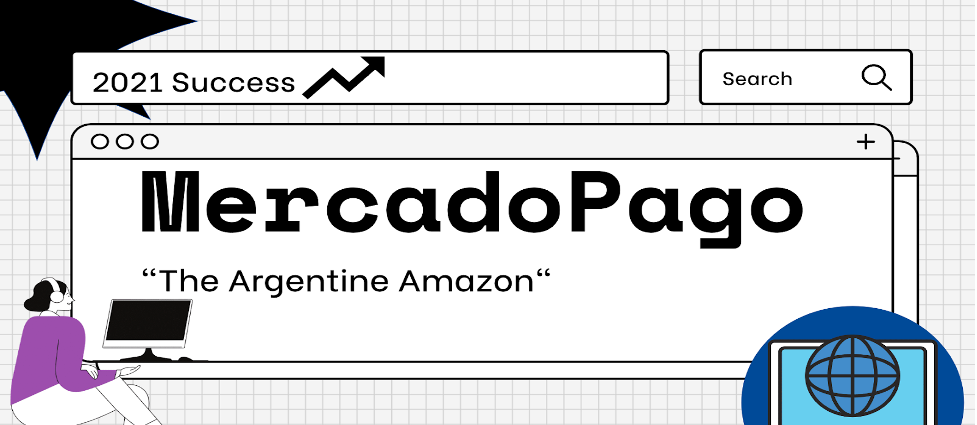Author: Aditi Somayajula, Graphics: Acasia Giannakouros
The BRB Bottomline
Argentine MercadoLibre is often referred to as ‘LATAM’s Amazon.’ The company operates in a region that has yet to undergo a digital transformation of retail. And for this reason, its potential is tremendous.
Often considered to be the Latin American counterpart to Amazon, Buenos Aires-based MercadoLibre operates in two industries that have witnessed substantial growth over the past decade: e-commerce and digital payments. The long-term outlook is promising—Latin America is at an early stage in the digitization of retail and payment solutions. Yet the optimism shared by analysts and investors must be reconciled with unique challenges of operating in Latin America. It’s a risk that often comes with emerging markets but, nevertheless, MercadoLibre is one to watch.
A Case for MercadoLibre
MercadoLibre (translating to ‘free market’ in Spanish) is an e-commerce ecosystem with a sister payments infrastructure system that has grown from mobile payments into credit and asset management capabilities. The company currently operates in eighteen countries across Latin America, including Argentina, Brazil, Mexico, Colombia, Venezuela, and Peru. Based on unique website visitors, MercadoLibre is the market leader in each of the major countries where it is present.
When founded in 1999, MercadoLibre was initially met with a considerable amount of skepticism. The doubtfulness was not necessarily due to the viability of the business model—as the number of broadband connections exploded globally, moving retail to an online marketplace seemed to be an inevitable transition. Rather, the question was more about whether an e-commerce ecosystem could be fostered in a region whose delivery and infrastructure complexities largely exceed those of its northern neighbors.
The Opportunity of LATAM
But despite the unique financial and geographic challenges that ensue with operating an e-commerce and payments platform in Latin America, a simple calculation of the addressable market demonstrates how potential appears to eclipse the risks. Latin America has a population of roughly 662 million. Internet penetration rates are among the fastest-growing in the world, although the percentage of households with Internet access remains notably low—roughly 59% in 2018. That figure helps to explain why e-commerce represents only 5.6% of total retail in Latin America, a statistic often used as a general proxy to understand the maturity of e-commerce in a particular economy. By comparison, the United States—the primary market of Amazon—has a population of nearly 330 million and an internet penetration rate of over 90% that translates to e-commerce comprising almost 20% of total retail. Of that 20%, market leader Amazon accounted for 39.8% in 2020, resulting in a net income of $21.33 billion.
The low penetration of fixed broadband rates in Latin America implies significant room for growth as Internet access continues to be democratized across the region. This will inevitably open up new avenues for retail and commerce in an area where most retail and commerce is traditionally brick-and-mortar. Establishing a marketplace where local businesses and independent sellers can conduct sales online largely capitalizes on this shift.
A Changing Landscape
In Latin America, the payments landscape is largely dominated by cash, as the majority of the population remains unbanked, roughly 50% in 2019. Therein lies the value of MercadoPago, the credit and payments arm of MercadoLibre. Established in 2003, MercadoPago is a digital payments platform that was originally created as an integrated solution to complement MercadoLibre. Today, the platform offers a variety of financial services including payment processing, credit cards, and mobile point-of-sale machines for small and medium-sized merchants. In addition, the platform began offering microloans in the midst of the pandemic and made its debut in the insurance sector this past year.
Today, MercadoPago claims to be focused on the democratization of money in Latin America. The platform is utilized by over one million users per month. And during its most recent financial quarter, the platform processed a total payment volume of over $20.9 billion.
The Pandemic Year
During the past pandemic year, MercadoLibre says that many businesses in Latin America succeeded in embracing digitization as the crisis helped owners understand the unparalleled benefits of operating an online business. That, alongside the general shift towards online shopping, resulted in MercadoLibre’s most successful year to date.
In the second financial quarter of 2020, MercadoLibre’s overall revenue surpassed $1 billion for the first time. The following year, the company reported a subsequent 67% boost in revenue. During the pandemic, the market value of the company soared from $27 billion to $63 billion, overtaking the respective market values of India’s Flipkart and South Korea’s Coupang. Executives at MercadoLibre predict that this growth will likely continue for the next decade, if not more, as the retail landscape in Latin America continues to change.
Looking Ahead
Although the outlook for MercadoLibre appears rosy, operating across eighteen countries in Latin America does not come without a unique set of challenges. With different financial regulations across countries, the risk of sovereign default, currency depreciation, political instability, and limited infrastructure, it seems that the success of MercadoLibre can be threatened at any moment.
But if the story of Amazon is any indication of the explosion of e-commerce, the potential of MercadoLibre is tremendous. Observing general e-commerce trends in Latin America and how MercadoLibre strives to meet the demands of a shifting economy will allow us to better understand the road ahead for the company. And so far, the future looks promising.
Take-Home Points
- Similar to Amazon, Argentine MercadoLibre is an online marketplace that operates in Latin America. It also has a digital payments platform, MercadoPago, that offers a variety of financial services.
- The potential of MercadoLibre is tremendous as Latin America remains at an early stage in the digital transformation of retail.
- The pandemic year was MercadoLibre’s most successful year to date. The company’s market value soared from $27 billion to $63 billion.
- Although operating in Latin America comes with a unique set of financial and economic challenges, the success story of Amazon suggests that a similar future might be in store for MercadoLibre.

